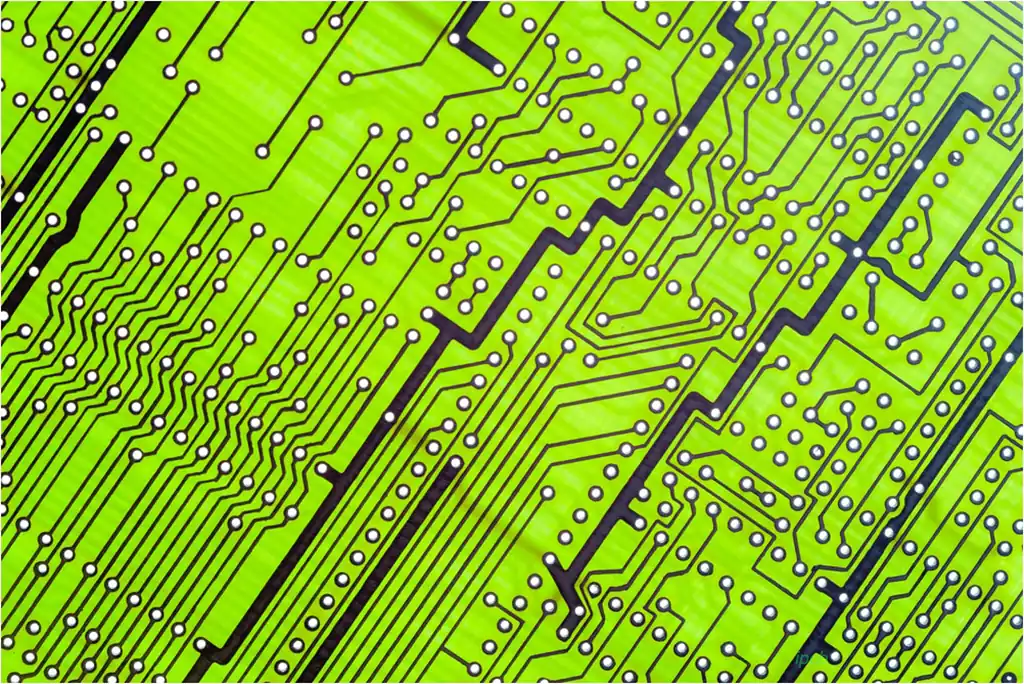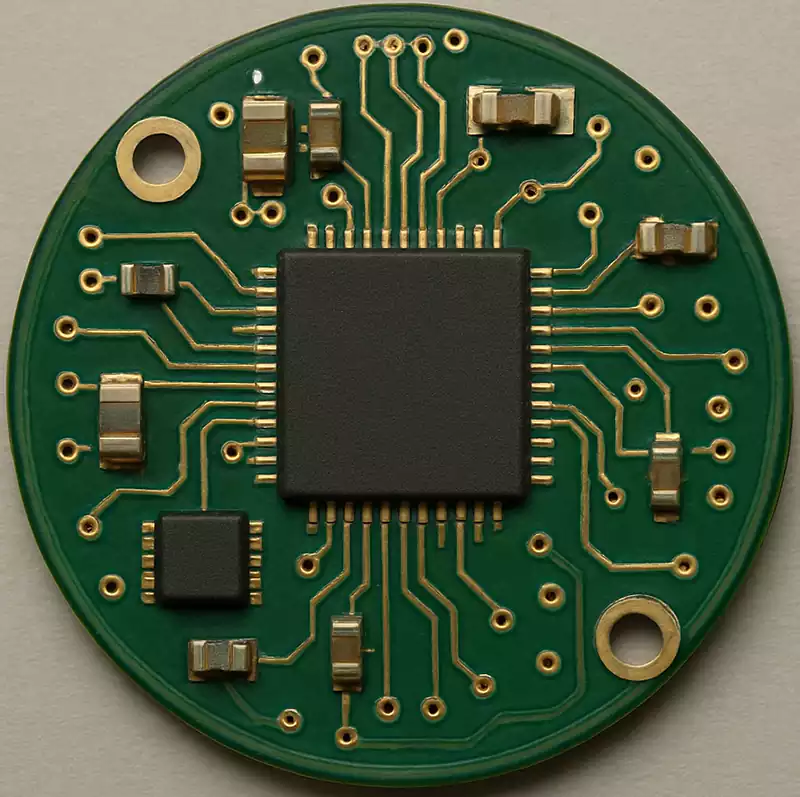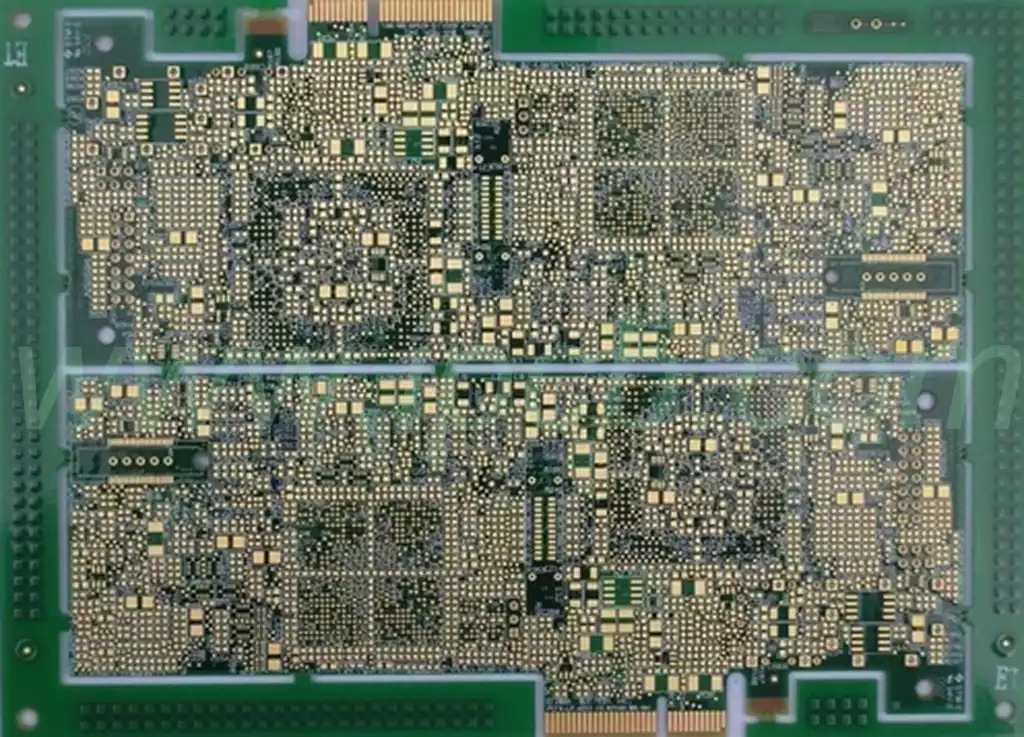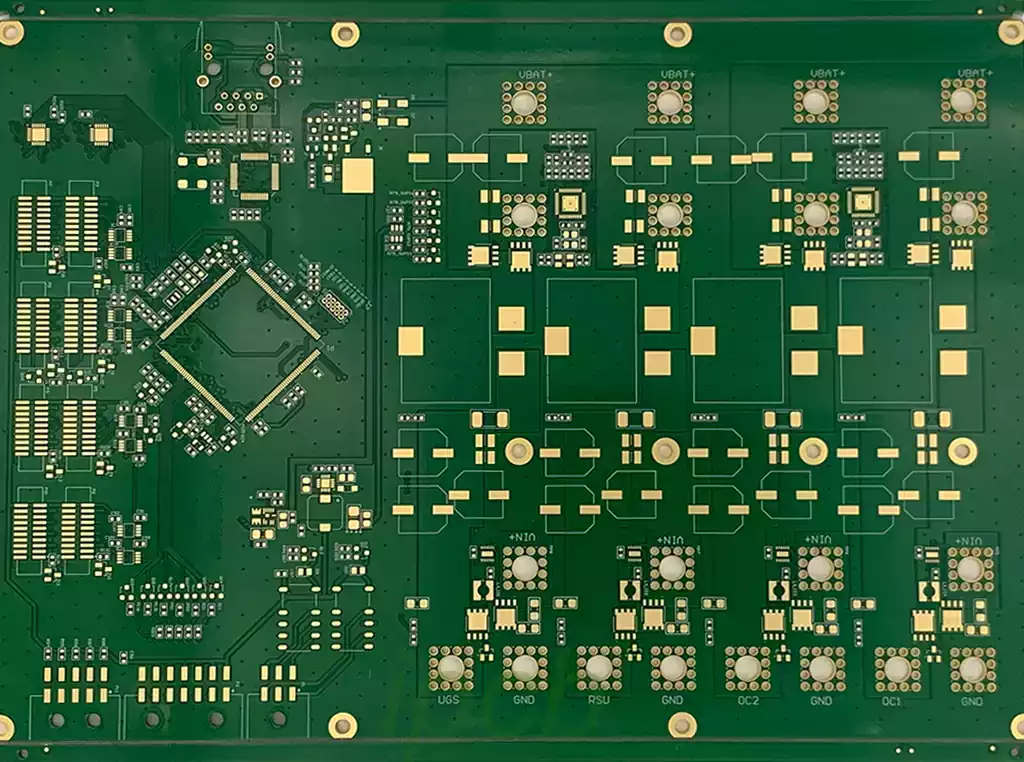PCB blue glue is a blue viscous adhesive classified as a peelable solder resist material. Applied to PCB surfaces via screen printing or foil printing, it cures to form a protective film that effectively isolates non-target areas during processes like soldering and electroplating. This prevents solder, chemicals, and other substances from adhering, thereby safeguarding pads, vias, and other components from contamination or damage.
It appears as a pale green or light blue viscous liquid with a density of 1.20±0.05 g/cm³. The product features solvent-free volatility for environmental friendliness, leaves no residue upon stripping, exhibits acid resistance capable of withstanding 10% hydrochloric acid solutions for 8-10 minutes, and supports UV curing processes.
Common Issues with Blue Glue
Bubbling in Blue Glue
Bubbling is a prominent issue during blue solder mask screen printing. The industry commonly employs 18T mesh screens for this process. Due to the high viscosity of blue glue (typically 500–900 adps), 18T screens offer advantages like reduced oil bleeding and the ability to achieve relatively ideal thickness in a single pass. However, to meet the minimum 0.3mm thickness requirement for lead-free soldering, 2–3 screen printing passes are necessary.
The coarse mesh structure of 18T screens poses a challenge. During squeegeeing, the mesh intersections contact the board surface, leaving gaps where blue glue cannot fully cover. When the screen is lifted, the mesh nodes create a pulling effect, causing the surrounding solder mask to close rapidly and form bubbles.
Solutions for Bubble Prevention
1) Replace the screen printing mesh with a 24T or 36T mesh. These meshes use finer yarn, resulting in smaller mesh node dimensions. During screen printing, the resulting bubbles will be smaller, reducing the risk of pad exposure caused by micro-bubbles. Additionally, the blue glue possesses some self-healing properties, allowing some small bubbles to dissipate over time.
2) Add a diluent to reduce viscosity. Diluents are rarely added to blue paste during use, as they are complex mixtures of various organic compounds, making evaluation and testing challenging.
3) After etching copper from the substrate, etch out the pattern to be screen-printed. Adhere the substrate to the screen base and remove the mesh above the substrate. Select substrate thickness based on required screen-printing thickness (e.g., 0.3mm substrate). This method generally achieves blue glue thickness requirements.
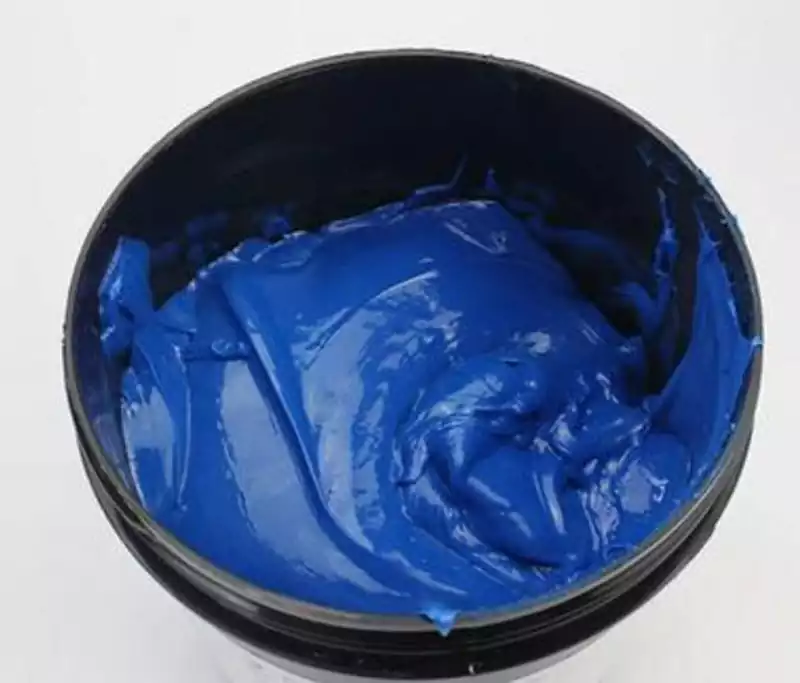
Blue Glue Residue Issues
1) Blue glue residue is less common on metal surfaces but more prevalent on substrates. This occurs primarily due to two factors: First, the relatively high surface roughness of substrates provides adhesion conditions for residue. Second, the inverted trapezoidal structure of plated-through holes or solder mask edges traps blue solder mask in gaps, leading to residue.
2) Another common scenario involves residue within holes. This primarily occurs during the peeling process after soldering, where the blue glue fractures during removal, leaving fragments trapped inside. This typically happens in holes smaller than 1.0mm in diameter. To mitigate this, minimizing blue glue ingress into holes during screen printing is essential, though achieving precise control in practice is often challenging. Therefore, it is recommended to place a rubber mat on the screen printing table surface. This acts as a barrier on the board’s reverse side, blocking airflow. When blue resist enters the holes, it must first displace the air, thereby reducing the amount of blue resist entering the holes and making subsequent stripping easier. Additionally, blue resist residue persists in V-cut grooves or N-PTH holes. Due to excessive wall roughness in these structures, current techniques struggle to remove all residue completely. Therefore, such pattern designs should be avoided during the design phase.
Solutions for Blue Paste Residue
1) Reduce the undercut of solder mask or the etching depth on the copper side of gold-plated boards.
2) For holes of 1.0mm and below, control blue paste thickness around 0.4mm. During screen printing, place a latex pad or apply red tape to the back of the hole to reduce blue glue ingress.
3) Avoid blue paste designs covering V-cut grooves or N-PTH holes.
Blue Glue Melting Issues
Currently, blue glue products circulating in the market exhibit no significant quality issues. In industry practice, mainstream reflow soldering processes are set within a temperature range of 260°C to 265°C, whilst the actual temperature applied to the board surface is controlled between 240°C and 250°C. To ensure optimal solder fusion, the duration at elevated temperatures (above 217°C) must be maintained between 60 and 120 seconds. For lead-free wave soldering processes, the set temperature is 270°C, though the soldering time is comparatively brief, typically not exceeding 3 seconds.
Strategies for Addressing Adhesive Melting Issues
1) For boards utilising blue adhesive, interleaving paper packaging is recommended. This effectively prevents direct contact and mutual compression of the blue adhesive between boards.
2) When boards are packaged using bubble wrap, there is no need to concern oneself with the potential adverse effects of pressure or vacuum treatment during packaging; relevant operations may proceed as normal.
3) For export products requiring secondary vacuum bag packaging, carefully control the vacuuming process to ensure only the air within the bag is fully evacuated. Typically, vacuum pressure is set to 760 mmHg with a vacuuming time of 6 seconds; however, specific parameters must be determined based on the actual packaging equipment used by each manufacturing plant.
Primary Functions of Blue Adhesive on PCB Circuit Boards:
- Protective function: Resists corrosion and electrolytic erosion. Blue solder paste shields specific PCB areas from acid/alkali solution corrosion and electrolytic attack by plating solutions, preventing chemical damage. Protects against plating and solder overrun: During plating and soldering operations, it safeguards designated circuit board sections from unintended effects.
- Insulation function: Specialised insulating blue gel for touchscreens serves as an insulating protective material for transparent conductive glass and ITO-coated films within touchscreens, providing insulation, moisture resistance, and protection.
- Facilitating Subsequent Processing: Easily removable with no residue, blue glue functions as a temporary coating. It can be completely stripped from the board after designated plating or soldering processes without leaving traces or stains in vias or on surfaces. This streamlines subsequent processing and eliminates the need for secondary cleaning.
- Enhanced production efficiency with energy savings and cost reduction. In PCB blue glue printing processes, adopting new methodologies reduces screen printing passes and baking cycles, thereby conserving energy and lowering production costs.
PCB blue glue offers significant advantages in manufacturing efficiency and circuit protection, though issues such as bubbles and residue require continued attention. Through process optimisation and material refinement, these challenges can be effectively addressed, driving blue glue technology towards higher precision and greater environmental sustainability.
